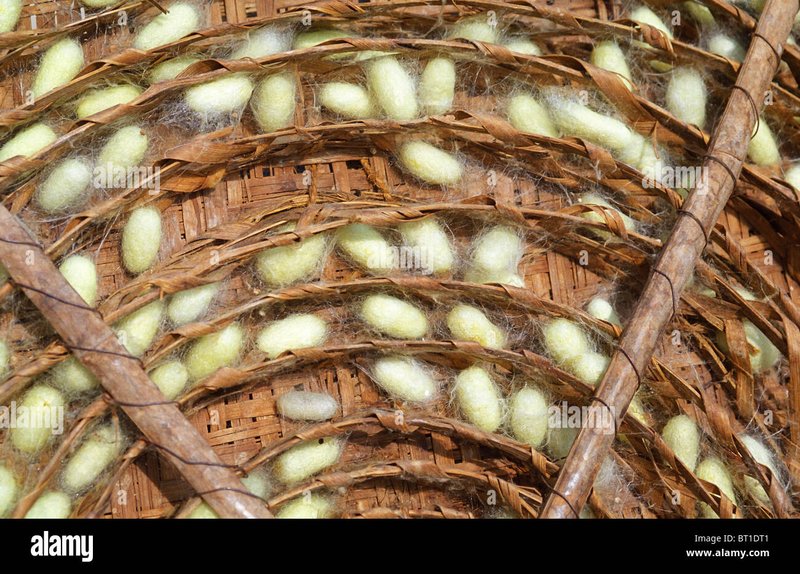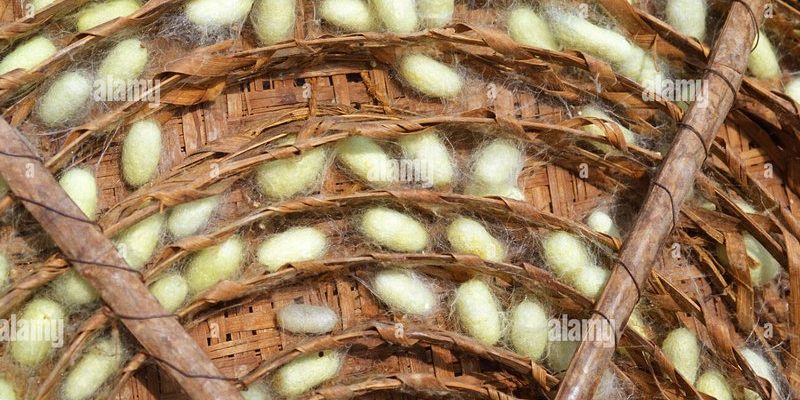
So, how many of these little critters does it take to yield a mere gram of silk? Honestly, the answer might surprise you. Using around 3,000 to 5,000 silkworms, you can get just one gram, depending on several factors. Those little creatures may be small, but they sure how to put in the work! Let’s dive deeper into this fascinating world of silk production so you can appreciate the effort that goes into every luxurious thread.
Understanding Silk Production
To grasp how many silkworms it takes for one gram of silk, it’s essential first to understand the silk production process. The journey begins with the *Bombyx mori* silkworm, which is the most commonly used species for commercial silk. These worms are raised on a diet of mulberry leaves and undergo a transformation from eggs to larvae to pupae. Once they reach maturity, they spin their cocoons, which are made of a single continuous thread of silk.
During this metamorphosis, each silkworm can produce a cocoon that contains about 1,000 to 3,000 feet of silk thread. That’s impressive, right? But here’s where it gets interesting: these threads are incredibly fine. When harvested and processed, they yield about 100–150 milligrams of silk per cocoon. Thus, it takes a remarkable number of cocoons—and hence silkworms—to generate even a tiny amount of silk.
How Many Silkworms for One Gram of Silk?
Now, let’s get into the numbers. When you’re looking at one gram of silk, you’re essentially considering 1,000 milligrams. If each cocoon gives you about 150 milligrams of silk, then you’ll need about seven cocoons to equal one gram. But, since each cocoon is spun by a single silkworm, you’ll require around 7 silkworms for just one gram of silk!
However, that’s just a simplified look. The actual number can vary based on factors like the health of the silkworms, the quality of the cocoon, and the harvesting process. This leads us to the realization that anywhere from 3,000 to 5,000 silkworms may be involved in reaching that one lucrative gram of silk when we consider a wider commercial scale.
The Life Cycle of a Silkworm
Understanding how many silkworms are needed for one gram of silk starts with knowing their life cycle. Silkworms go through several stages: egg, larva (caterpillar), pupa, and adult moth. Each stage plays a critical role in the overall silk production.
1. **Egg Stage**: The journey begins with tiny eggs, which hatch after about ten days.
2. **Larva Stage**: The hatched larvae feed almost constantly, growing significantly over a few weeks.
3. **Pupa Stage**: Once they are ready to form cocoons, they stop eating and start spinning—this is where the silk is produced.
4. **Moth Stage**: Lastly, the moth emerges from the cocoon, but commercial production typically uses the cocoon before the moth can emerge.
This life cycle not only reflects the dedication of silkworms but also the meticulous care needed to raise them. Farmers need to monitor factors like temperature and humidity to ensure that the silkworms thrive, making the process even more labor-intensive.
The Economic Impact of Silk Farming
Silk farming has significant economic implications, particularly in countries like China, India, and Brazil, where this craft has been honed over centuries. The production of silk is labor-intensive, meaning it provides jobs for thousands of people. From the farmers who raise the silkworms to the artisans who weave the silk into fabric, it’s a community effort.
You might be wondering: why go through all this effort for silk? Well, silk is highly valued for its strength, luster, and softness. It’s often seen as a status symbol, making it a lucrative market for farmers. Plus, sustainable silk farming methods are being developed, allowing for eco-friendly practices while still supporting the economy.
Silk vs. Other Fabrics: What Makes It Special?
Let’s take a moment to compare silk with other common fabrics. While cotton, polyester, and wool have their merits, silk is often considered the jewel of textiles for several reasons:
– **Luxurious Feel**: Silk has a unique softness that other fabrics can’t match.
– **Temperature Regulation**: It keeps you cool in summer and warm in winter, making it a versatile choice.
– **Durability**: Despite its delicate appearance, silk is surprisingly strong when cared for properly.
This special combination of qualities explains why so many people love silk despite the higher price tag. Each gram represents a lot of hard work by many silkworms, making it a treasured material.
Caring for Silk: What You Need to Know
If you’re lucky enough to own silk garments, knowing how to care for them is crucial. Here are some tips to keep your silk items looking beautiful:
– **Hand Wash Only**: Use cool water and a gentle detergent. Avoid wringing out the fabric, as this can damage the fibers.
– **Dry Flat**: Never hang silk to dry, as it can stretch out of shape. Instead, lay it flat on a clean towel.
– **Avoid Sunlight**: Direct sunlight can fade silk, so store it in a cool, dark place when you’re not wearing it.
Silk requires a bit of love and attention, but the results are undoubtedly worth it when you feel the luxurious fabric against your skin.
When you think about how many silkworms are needed for one gram of silk, it’s a testament to nature’s beauty and the dedication required in its production. Approximately 3,000 to 5,000 silkworms contribute to creating that delightful fabric you adore. Each thread represents a tiny miracle of hard work, cautioned care, and the cycle of life.
Understanding this process not only enhances your appreciation for silk but also connects you with the artisans and farmers who invest so much into this time-honored craft. So, the next time you slip into a silky piece of clothing, take a moment to think about the journey those silkworms took to bring you luxury!

